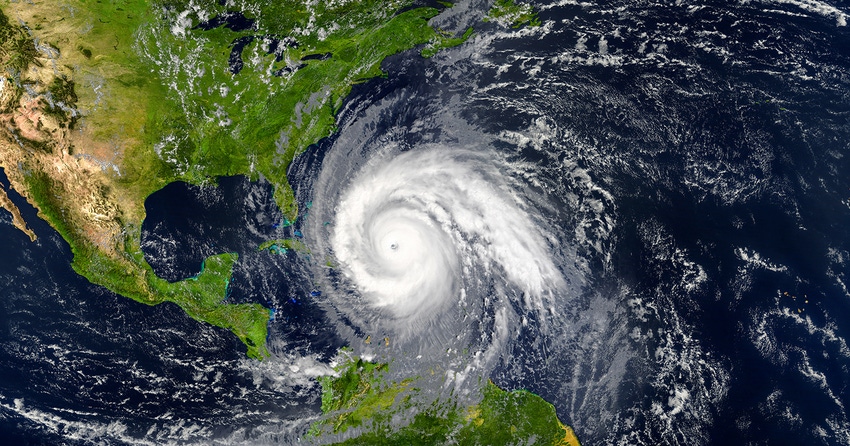
With climate change producing more frequent and more destructive hurricanes, farmers, foresters, and ranchers are increasingly at the mercy of these super storms. To help producers navigate these challenges, the USDA Southeast Climate Hub, other USDA agencies and university Extension experts have developed state-level commodity guides to help prepare for, and recover from, hurricanes.
Steven McNulty, director of the Southeast Climate Hub, discussed the guides during a recent webinar hosted by The National Coalition for Food and Agricultural Research (NC-FAR), a non-profit, non-partisan research organization. McNulty, based in Research Triangle Park, N.C., has spent more than 30 years researching environmental stress impacts and adaptive management options for forests, agriculture and rangelands.
McNulty said the increasing frequency of storms causing billions of dollars of damage, puts farmers in hurricane-prone regions at considerable risk.
 Steven McNulty (Southeast Climate Hub)
Steven McNulty (Southeast Climate Hub)
“Crop losses are the most obvious, but there can also be infrastructure damage to structures such as barns, solos and greenhouses,” McNulty said. “Flooding can cause elevated soil salinity levels, safety hazards and supply chain disruptions.
With the threat increasing, the USDA Southeast Climate Hub, other government agencies and university Extension experts convened a hurricane workshop in Gainesville, Fla., a few years ago. That meeting led to additional research and the conclusion that while there was lots of information on the topic, most of it was scattered and inconsistent.
“We decided to develop a series of manuals, 23 covering a wide range of commodities,” McNulty said.
Alphabetically, the commodity guides range from beef to watermelon, and include corn, cotton, peanuts, rice and soybeans. While the manuals are similar, they vary in content with tips including what to look for when selecting a site for a commodity operation. The guides target state Extension agents and consultants who will pass along the information to farmers, foresters and ranchers.
Topics and tips
Topics include advice on how to protect infrastructure and how to plan for water management. Tips include how to develop wind breaks and other structures to reduce wind strength.
McNulty said farmers may need to consider changing the time of maturation to harvest of some crops.
“If you can get a crop that finishes by August, you can reduce risk,” he said. For example, a corn crop that matures in 55 days might be harvested prior to the start of hurricane season.
Soil salinization following a hurricane, McNulty said, is lesser-known problem.
“With sea levels, rising, soil salinization is becoming an increasing problem. A storm surge is all salt water. When these waters get pushed inland, they bring a lot of salt and can have some negative impacts.”
The guides offer emergency planning information as well as guidance on where to seek help following a hurricane.
“After a hurricane, it’s bedlam, and this can go on for weeks or month,” McNulty said. “The priority is to ensure personal health and safety and then do an assessment of damage before seeking recovery assistance. The guides include a section on who to call after a hurricane.”

McNulty said the hurricane season is gradually beginning earlier and lasting longer.
“Ocean waters are warm and the longer the oceans stay warm, the more severe hurricanes can get and the longer the season can go,” he said.
The guides are available in print from Extension agents. McNulty said the USDA hopes to offer in-person training on the guides in the future. For more information, go to https://www.climatehubs.usda.gov/hubs/southeast/topic/hurricane-preparation-and-recovery-southeast-us
About the Author(s)
You May Also Like






